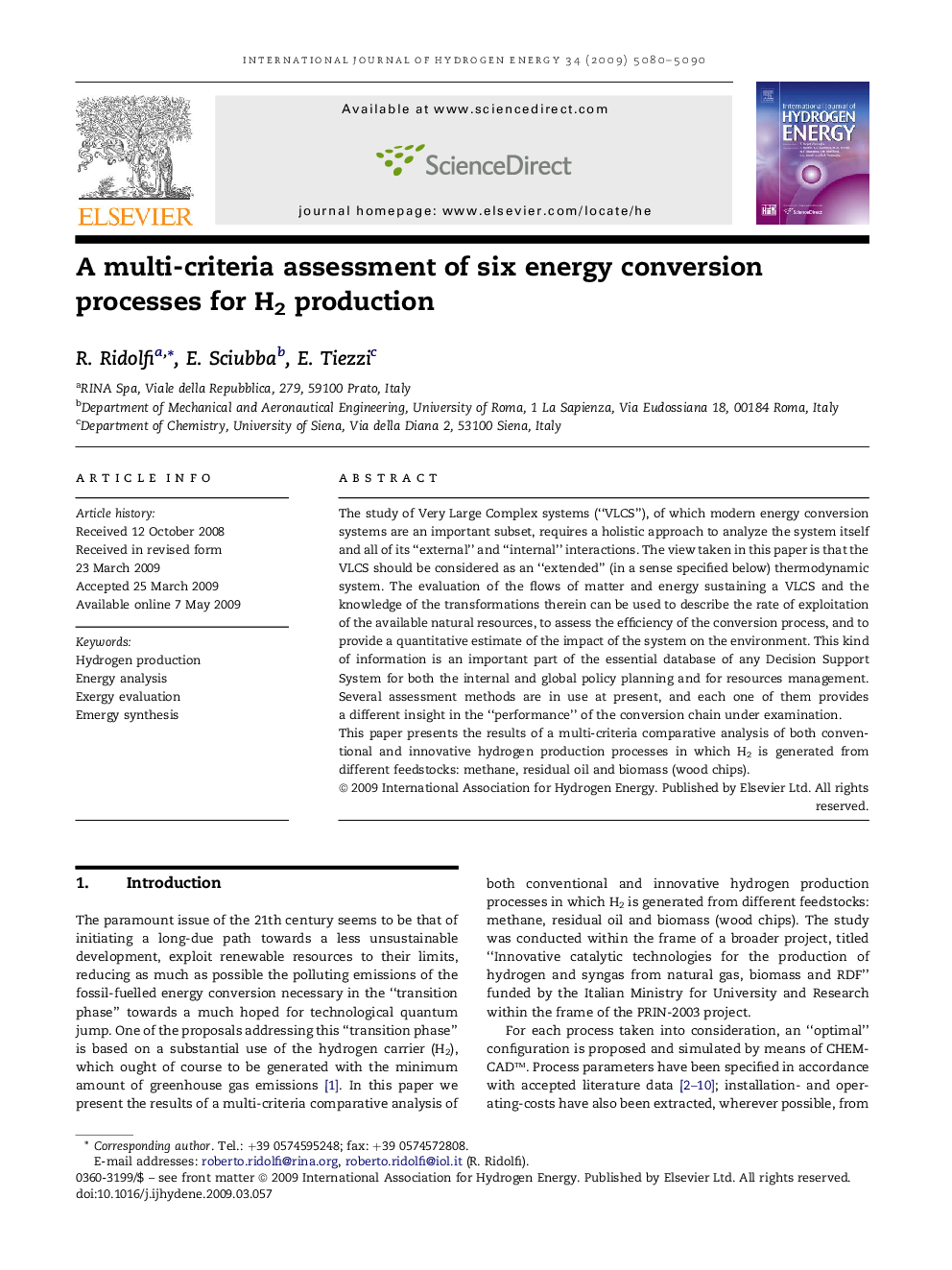| Article ID | Journal | Published Year | Pages | File Type |
|---|---|---|---|---|
| 1278819 | International Journal of Hydrogen Energy | 2009 | 11 Pages |
The study of Very Large Complex systems (“VLCS”), of which modern energy conversion systems are an important subset, requires a holistic approach to analyze the system itself and all of its “external” and “internal” interactions. The view taken in this paper is that the VLCS should be considered as an “extended” (in a sense specified below) thermodynamic system. The evaluation of the flows of matter and energy sustaining a VLCS and the knowledge of the transformations therein can be used to describe the rate of exploitation of the available natural resources, to assess the efficiency of the conversion process, and to provide a quantitative estimate of the impact of the system on the environment. This kind of information is an important part of the essential database of any Decision Support System for both the internal and global policy planning and for resources management. Several assessment methods are in use at present, and each one of them provides a different insight in the “performance” of the conversion chain under examination.This paper presents the results of a multi-criteria comparative analysis of both conventional and innovative hydrogen production processes in which H2 is generated from different feedstocks: methane, residual oil and biomass (wood chips).
